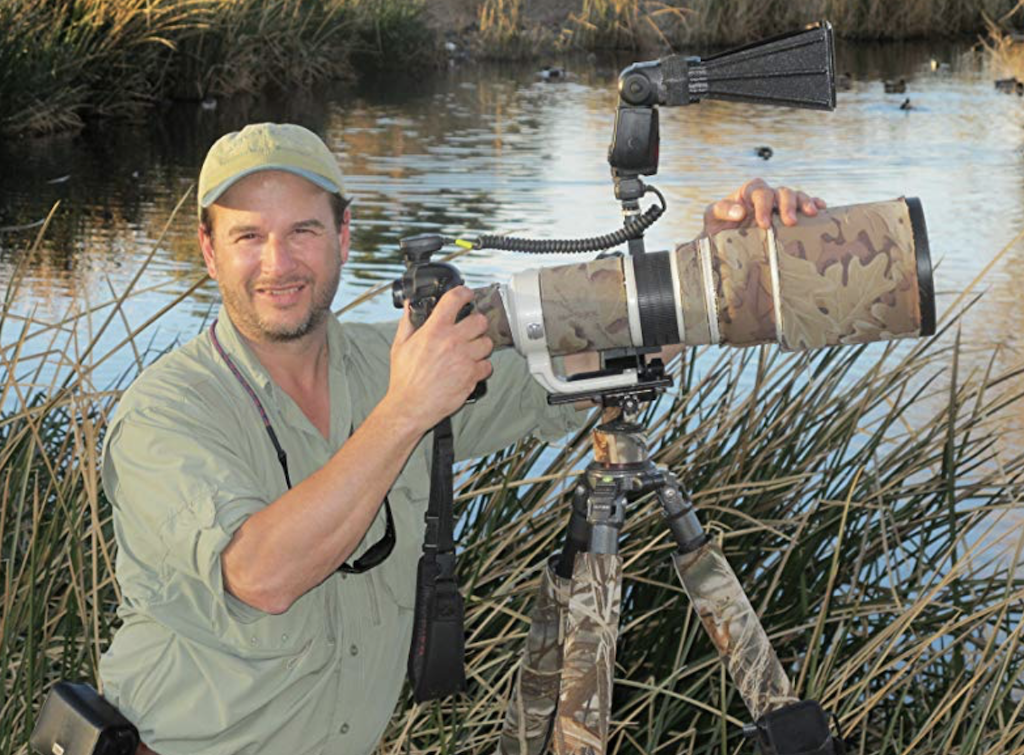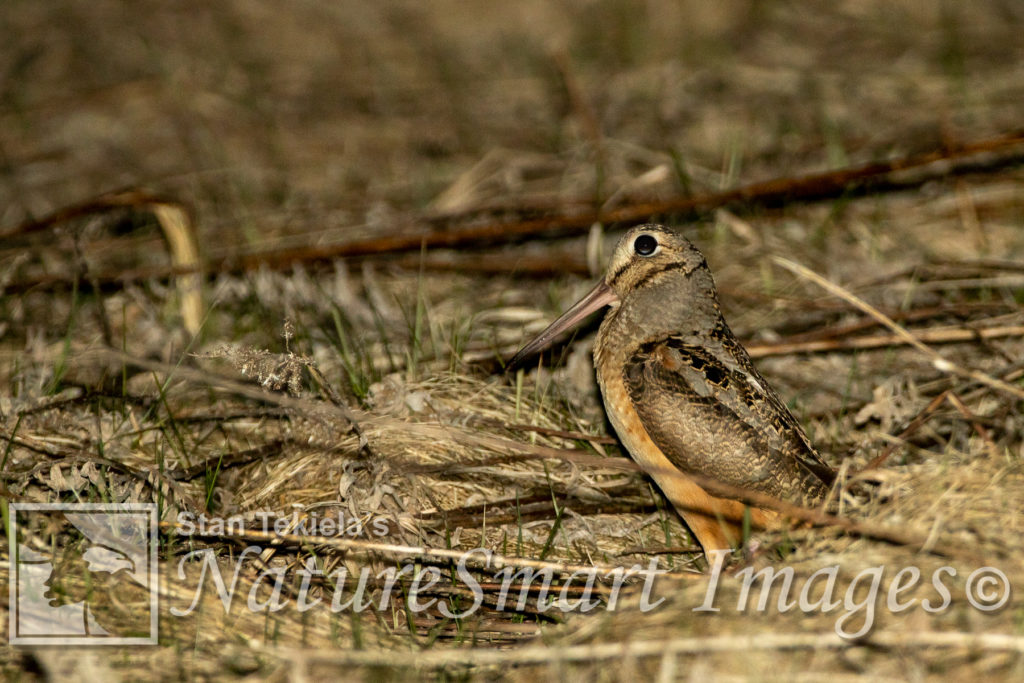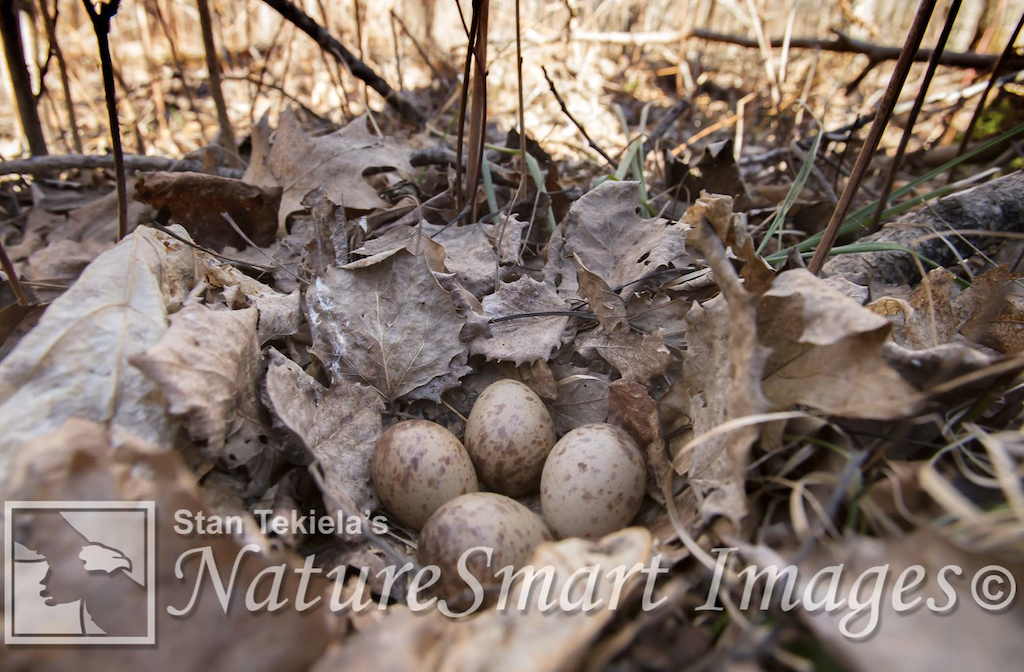
A Look at the American Woodcock
Stan Tekiela, naturalist and wildlife photographer par excellence, takes a look at the American Woodcock.
We at Adventure Publications hope all our readers and their loved ones remain healthy and safe. Without intending to trivialize the current crisis, we will continue to post positive stories in hopes of bringing some joy into your home as a welcome distraction during these trying times.

Stepping out of my truck and into the cool, fresh air of a late evening, it feels so good to be outside in nature, especially after being trapped inside my house for these many weeks. To the west, the sun is setting, and I figure I have about 10 minutes before all the fun begins.
I love these early spring evenings when the temperatures finally warm up and the wind is not causing a bone-crushing wind-chill factor. It’s comfortable to be outside again. The bugs haven’t come out yet, and it feels like the earth is slowly coming to life again after a long winter dormancy.

For over 40 years I have spent at least a couple of early spring evenings studying and photographing a very special and unique bird, the Timber-doodle, otherwise known as the American Woodcock (Scolopax minor). Although it is classified with the sandpipers and other shorebirds, the woodcock is an “upland” shorebird. Or to put it another way, it’s a shorebird that doesn’t live at the shore. In fact, it lives in deciduous woodlands. It ranges across the entire eastern half of the country, with all of the birds migrating out of the northern half of the country to join those in the southern half every winter. Each spring, the American Woodcock is among the first birds to migrate back to the northern forests.
The American Woodcock is a rather small but chunky bird with a long, narrow bill. It has amazing camouflage-colored feathers that allow it to blend into its environment of dried leaves on the forest floor. In fact, it is nearly impossible to see one when it hunkers down on the forest floor and doesn’t move.
It has short legs, especially for a shorebird, and a round head and huge bulging eyes on the sides of its head. It is believed that the vision of the woodcock covers nearly 360 degrees around the bird and also above the bird. This means it has the ability to see in front and behind and above without turning its head. This comes in handy if you spend a lot of time with your long bill poked into the ground or mud. Because of this side-of-the-head eye position, the ears of the woodcock are located under the eyes, instead of behind, as it is in most bird species. Their hearing is just as good as their eyesight.

The bill of the woodcock is several inches long and highly adapted for probing into the soft earth. It is often described as a prehensile bill. Earthworms make up about 60 percent of the bird’s diet. The rest of the diet is a combination of other insects such as ants, flies, beetles, crickets, and others. They feed in the early evening and again near morning, spending their days resting. A woodcock may eat its own weight in worms and other insects each day.
But it is the display flight of the males that brings me out on a warm spring evening at sunset. The American Woodcock male performs one of the most amazing display flights in the bird world. About 15 to 20 minutes after sunset, during the twilight hour, male woodcocks fly into a displaying arena. Each male starts by giving a raspy or buzzy single-note call that sounds like he is saying, “peent.” This call is given over and over, several seconds apart. Then, suddenly and without warning, the male takes flight into the evening sky. With barely enough light for anyone to see, the male flies up to about 100 feet elevation and begins a slow-motion display flight. During this spiral flight he produces several high-pitched twittering sounds with his wings as the air goes rushing through his outer or longest primary flight feathers.
Females sit on the ground in the arena, watching and listening to the high-flying males give their “sky dance.” Then, suddenly, the male spirals down out of the sky, plummets to the earth at a high speed, lands back on the display ground, and starts to call again. If he is successful at impressing a female, she will fly close to him in the arena and they will have a brief encounter. She will fly off into the woods to build a nest and lay eggs and the male will return to his sky dance.
No matter how many times I see the sky dance of the American Woodcock, it always brings a smile to my face and warms my heart. The sky dance of the woodcock is truly a sign of spring in the northland.
If you enjoyed Stan’s post, you may consider one of his amazing nature books: Majestic Eagles; The Lives of Wolves, Coyotes, and Foxes; or Backyard Birds: Welcomed Guests at our Gardens and Feeders.
You can follow Stan on Facebook and Twitter, or contact him via his web page. Stan’s nationally syndicated NatureSmart Column appears in more than 25 cities spanning 5 states (Minnesota, Wisconsin, Michigan, Illinois, and Pennsylvania) and is circulated to more than 750,000 readers.
For more stories about wildlife and nature, sign up for our newsletter now!


